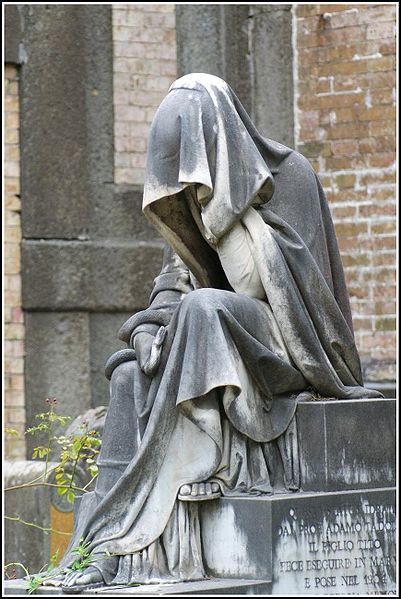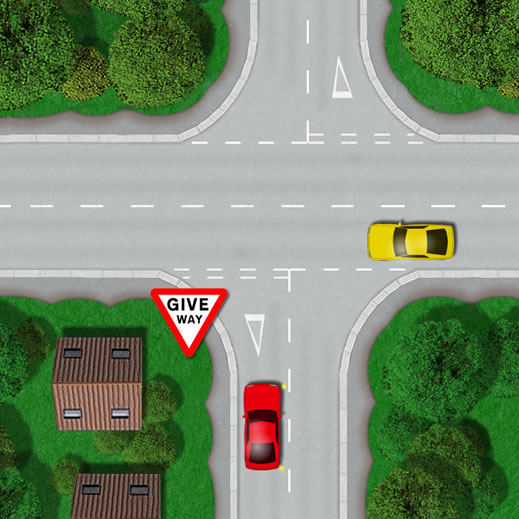Please read this post, which is a summary on how to get a driving licence, as well as the previous part(s) before reading this one if you haven't already.
If you have read my previous posts or are familiar with the procedures in obtaining a driving licence, then you would know that I'll have to do a law-related test after the 6-hour lecture.
What is this spooky sounding test, you ask? I think I'll just put in all the information you need to know about Ujian Bahagian I (KPP 01) in bullet point form.
- A computerised, MCQ test. Yes, you heard that right. No more worrying about preparing stationery or writing long essays about road regulations.
- You will be tested on eyesight and colour blindness, as well as basic road laws and road ethics.
- You'll be given 45 minutes to complete this test.
- This test can be done at any MyEG or Rilek centre in your area but make sure to book your place first.
- There are 2 "papers" in this test:
- Ujian Kecacatan, Warna dan Penglihatan
- Ujian Bahagian I (Statik)
- Ujian Kecacatan, Warna dan Penglihatan will have questions where they display images and you'll have to choose the correct letter, word sequence, shape, or number shown in the displayed image. Pictures include car number plates, basic colours, and those typical colour blindness test images (you'll know what I mean when you search it up).
- Ujian Bahagian I contains 3 sections:
- Section A (15 marks) mainly focuses on road signs. It's as easy as it sounds as long as you memorise and recognise each sign's function.
- Section B (25 marks) contains questions about rules and ethics on the road. Think of it as a "manners test". You may be questioned about things such as which car goes first in a junction, what to do when your car starts to have problems on the road, and how much distance you should keep between your car and other cars.
- Section C (10 marks) is about the actual road laws, the ones that are written on paper. Don't worry, the ones you'll be tested on should be basic and relevant enough for casual drivers such as most of us.
- Overall, there are 50 questions. You'll need to pass the eyesight test and score at least 42 marks and above for the theory test in order to pass Ujian Bahagian I and earn a Learner's card. That's like 84%.
Did any of that sound confusing or intimidating to you? If any of them apply, then I have some good news. I may not be able to give assurance that you have nothing to worry about because I know from the experiences of others that this test isn't always a walk in the park, but I can tell you how I managed to score 50/50 and pass the test.
When I got the date of my test, I started panicking for the rest of the days coming to that date. At first, I tried reading through the driving textbook to prepare myself. The information there is ample, but I need more. Typical me ridden with anxiety. I started searching through blogs and websites, trying to find any detailed information about the test or anyone's experience going through it.
Alright, I'm starting to get lazy at this point so I'm going to cut this flashback short.
Get the mobile app called
"KPP Test Malaysia" by HII KIING SHI on the Apple Store. It's absolutely free, and I love the clean minimalistic HQ user interface compared to other apps. This app allows you to do practices on the questions, do timed practice tests, read through your past test answers and read analysis on them. The good things about this app are that you can choose to answer the questions in BM or English (did you know this? I didn't the first time) and you can choose your licence type to tailor the questions to said type.
 |
| This is how the app looks like. Pretty neat and easy on the eyes. |
The best part? The questions in this app are almost similar to the real test. Trust me 😉. Of course, I didn't know that until I actually did the test in the next few days. I spent days and most of my free time binge practising on this app. I'd keep going until I was able to answer the questions within less than 10 minutes, and score between 48-50 marks. It's safe to say that
you'll have to pay more attention to Section C, as that's where a lot of people think "screw it, I'll just wing this while I focus hard on the easier sections".
I heard that this app isn't available for Android as of this post, so what I can recommend for you guys is
this website or any other relevant app available in the Play Store. If you prefer books than screens or are sceptical about these options, then consider getting a question booklet. These kinds of books usually contain around 500 questions, where 50 of these are randomly pulled by the test system for each person's test. I prefer an interactive practice, but to each their own.
The day has finally arrived and I travelled to the Rilek centre where I registered myself for the test a few days ago. I don't really know what these MyEG or KOMMS/Rilek centres actually are but it doesn't matter as long as I get to do my test. I arrived there pretty early in the morning, probably an hour or two after its opening time. I heard that the place can be pretty crowded during peak hours so
do try putting in effort to be an early bird if you hate waiting around.
This Rilek centre is located in a shop lot row, so it's kind of small like a shop. Once I entered the centre, I was told to queue and take my number. Oh right,
parents and agents aren't allowed in the centre, only the candidate who booked a test on that day. There were around 10 people in the waiting area with me, most of them doing last minute readings with their textbooks or question booklets. The room was almost stressfully quiet, save for the sounds of the clerks clicking away on keyboards or chatting with those at the counter.
When it was my turn, I walked towards the counter and did the usual things. Giving my IC number, scanning my thumbprints, and having my photo taken (with a RM10 fee) for my Learner's card. I was then given a computer number and told to enter the next room for the test. My bag and items had to be placed in a nearby shelf before entering the computer room, though. I wasn't paying much attention to the surroundings as I was nervous about the test. What I can say is that the room is kind of like an ICT lab or a cyber cafe but with dividers for each computer unit.
Anyway, I sat at my designated computer unit and entered in my information on the screen before proceeding with the test.
Remember to set the test to your preferred language. A lot of people assume you have to answer the test in BM, but that's fortunately false. There'll be an option for you to answer the test in English if that's your cup of tea. I know a friend who failed the test because he didn't understand the questions in BM enough to answer them properly.
Basically, the test just displays a question to you and you choose an answer from 4 options. When you're done with one section, you can continue with the next one. If I remember correctly, you can also choose to skip a question for later if you're unsure of the answer. When you're done, you can choose to go through your answers again and make any amendments if necessary. If you're ready to finish the test, just submit your answers and
your results will be displayed on the next page. You'll know right then and there if you passed or failed the test. I was so elated when I saw that I scored 50/50 for my test because I felt like I was overconfidently rushing through in around 10 minutes.
 |
| Just hope that you'll get an easy set of questions like I did. |
Anyone who completes their test will be able to leave the computer room and head back to the counter to collect their result slip and "sign out". They can then leave the centre and schedule their practical driving lessons after receiving their Learner's card. Remember to collect back any belongings you may have left at the shelf! If you happened to fail the test, it's okay.
Failure is a normal process in life. Just book for another test at another time and keep on practising.
Oh boy, this post seems to be getting too long. I'll end it by giving a small tip: in any junction,
the order of which car in which lane gets to cross first is determined by which lane has a "safer" action. In a T-junction, the car facing the dead end has to give way to the other two lanes before proceeding. A car that wants to travel forward has priority over a car that wants to cross a junction (like an L shape).
🔆 ~Thanks for reading my post and have a nice day~ 🔆










